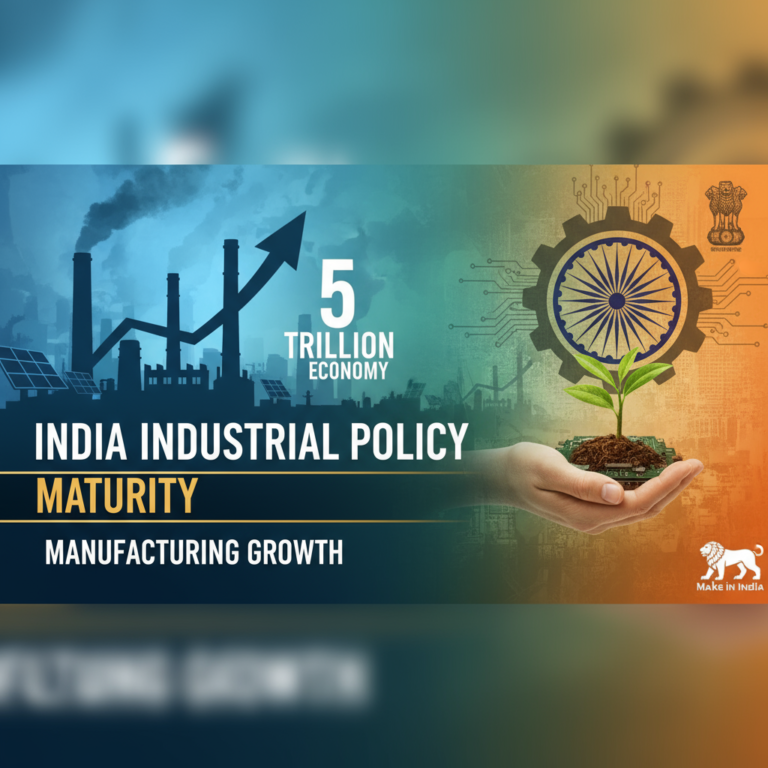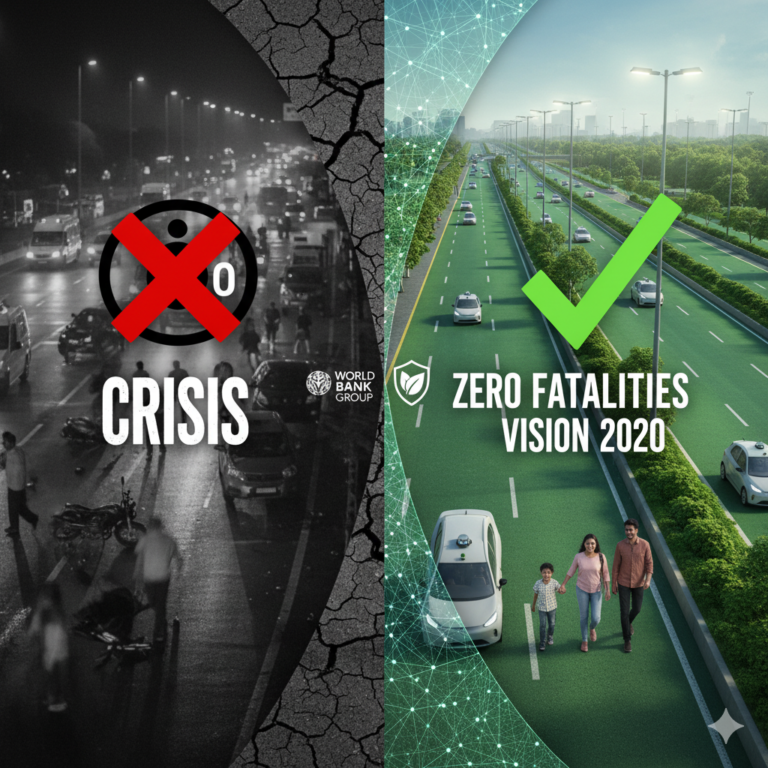Gist:
- Sustainable urban environments are essential to addressing climate change, reducing inequalities, and enhancing quality of life.
- Core pillars include green infrastructure, renewable energy, efficient transport, inclusive housing, and citizen participation.
- Technology such as IoT, AI, and GIS plays a crucial role in planning and managing cities sustainably.
- Indian cities face unique challenges like rapid urbanization, informal housing, pollution, and weak infrastructure.
- Policy frameworks like the Smart Cities Mission, AMRUT, and international models offer valuable guidance.
- Collaboration among government, private sector, academia, and citizens is critical.
Introduction
As the global urban population continues to surge, cities are becoming the frontline in the battle for a sustainable future. More than half of the world’s population already lives in urban areas, and this figure is expected to reach 68% by 2050, according to the United Nations. Urbanization offers opportunities for economic growth, innovation, and improved living standards. However, it also brings significant challenges like pollution, resource depletion, inequality, and environmental degradation. The solution? Creating sustainable urban environments that prioritize both people and the planet.
What is a Sustainable Urban Environment?
A sustainable urban environment is one that meets the needs of the present population without compromising the ability of future generations to meet theirs. It aims to strike a balance between environmental protection, social equity, and economic growth. Key characteristics include:
- Energy-efficient buildings and infrastructure
- Accessible and reliable public transportation
- Green spaces and biodiversity
- Inclusive and affordable housing
- Waste reduction and circular economy practices
- Community engagement and participatory governance
Pillars of Sustainable Urban Development

1. Green Infrastructure and Nature-Based Solutions
Green infrastructure includes parks, green roofs, urban forests, and wetlands. These not only improve air and water quality but also mitigate the urban heat island effect and enhance mental well-being. Nature-based solutions also act as natural buffers against floods and extreme weather events.
Example: Singapore’s ‘City in a Garden’ approach integrates greenery into urban planning, creating a cooler and more liveable city.
2. Renewable Energy and Energy Efficiency
Transitioning to renewable energy sources like solar, wind, and biogas is crucial. Smart grids, energy-efficient appliances, and sustainable building materials can significantly reduce urban carbon footprints.
Indian Context: Cities like Pune and Coimbatore are increasingly installing rooftop solar systems in municipal buildings and promoting energy audits for industries.
3. Sustainable Mobility and Public Transport
Efficient and affordable public transport reduces traffic congestion and air pollution. Non-motorized transport options such as cycling and walking should also be promoted through dedicated infrastructure.
Model: Copenhagen has become a global leader in cycling, with over 60% of its population commuting by bicycle daily.
4. Inclusive and Affordable Housing
Urban planning must address the needs of all citizens, especially low-income groups. Affordable housing, slum upgrading, and mixed-income developments are essential for social equity.
Initiative: India’s PMAY (Pradhan Mantri Awas Yojana) aims to provide housing for all by 2022 through interest subsidies and partnerships.
5. Smart Technologies for Smart Cities
Digital tools like Geographic Information Systems (GIS), Internet of Things (IoT), Artificial Intelligence (AI), and big data analytics enable efficient city management. These technologies can optimize traffic flows, manage waste, and improve emergency responses.
Example: Barcelona’s smart city platform uses sensors to monitor air quality, control lighting, and manage water usage.
6. Waste Management and Circular Economy
Cities must move beyond landfills to implement reduce-reuse-recycle (3R) principles. Decentralized waste segregation, composting, and upcycling initiatives are gaining traction.
Case Study: Indore, Madhya Pradesh has consistently ranked as India’s cleanest city due to its effective waste segregation and public participation campaigns.
7. Climate Resilience and Disaster Preparedness
Urban areas must be resilient to climate impacts such as floods, heatwaves, and sea-level rise. Early warning systems, climate-proof infrastructure, and resilient livelihoods can safeguard urban populations.
Global Reference: Rotterdam has developed floating houses and water plazas to adapt to rising sea levels and frequent flooding.
Challenges in India’s Urban Sustainability Journey
- Rapid Urbanization: Cities like Delhi, Mumbai, and Bengaluru are expanding rapidly, often outpacing infrastructure.
- Air and Water Pollution: Major cities frequently record hazardous air quality levels and polluted water bodies.
- Unplanned Urban Sprawl: Lack of coherent urban planning has led to congested slums and poor access to basic services.
- Financing Constraints: Many local bodies lack the resources or autonomy to invest in sustainable infrastructure.
- Governance and Coordination Issues: Overlapping jurisdictions and inadequate data integration hamper sustainable efforts.
Key Policy Frameworks and Missions
- Smart Cities Mission: Focuses on urban renewal and retrofitting to make cities citizen-friendly and sustainable.
- AMRUT (Atal Mission for Rejuvenation and Urban Transformation): Targets basic services like water supply, sewerage, and green spaces.
- National Urban Policy Framework (NUPF): Provides a strategic vision for future urban development in India.
- Swachh Bharat Mission (Urban): Aims for a clean urban India through improved sanitation and waste management.
Community Participation and Behavioral Change
Sustainability is not just about infrastructure; it’s also about people. Engaging citizens in planning, decision-making, and implementation fosters ownership and ensures long-term success. Urban local bodies must invest in awareness programs, workshops, and participatory tools.
Example: Pune’s participatory budgeting model enables residents to propose and vote on local projects for their neighborhoods.
The Role of Private Sector and Academia
- Startups and Corporates: Offer innovative technologies in green construction, electric mobility, and waste recycling.
- Universities and Think Tanks: Contribute through research, capacity building, and policy recommendations.
Collaborative models like Public-Private Partnerships (PPPs) can accelerate sustainable urban transformation.
Future Outlook: Vision for Indian Cities
By 2047, when India celebrates 100 years of independence, its urban centers should embody inclusivity, resilience, and environmental stewardship. Future cities must:
- Harness AI and digital twin technologies for real-time urban management
- Ensure universal access to green public spaces
- Foster circular economies at the ward and city level
- Promote zero-carbon buildings and sustainable mobility
Conclusion
Creating sustainable urban environments is both a necessity and an opportunity. As climate risks intensify and urban populations grow, cities must evolve into engines of equitable growth and ecological balance. India stands at a crossroads, with the chance to reimagine its urban future — one that leaves no one behind and ensures a livable planet for generations to come.









+ There are no comments
Add yours